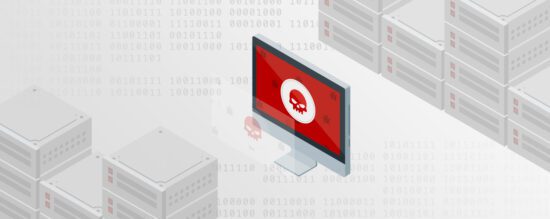
Introduction
Ransomware attacks have become a significant threat to businesses of all sizes, including merchants who rely on electronic payment systems for their operations. These malicious attacks can lock you out of your critical systems, encrypt your data, and demand a hefty ransom in exchange for the decryption key. To safeguard your business and customer data, implementing robust ransomware protection strategies is essential. In this article, we will explore effective strategies for merchant ransomware protection.
- Employee Training and Awareness
One of the weakest links in any cybersecurity defense is often human error. Employees can unintentionally download malicious files or click on phishing emails, making it crucial to invest in ongoing cybersecurity training and awareness programs. Ensure that your staff is well-informed about the risks associated with ransomware attacks and understands the importance of following security protocols and best practices.
- Regular Data Backups
Regularly backing up your critical data is a fundamental ransomware protection strategy. By maintaining up-to-date backups stored in a secure, offline location, you can quickly recover your data without having to pay a ransom. Automated backup solutions can help ensure that your data is consistently protected.
- Network Segmentation
Network segmentation involves dividing your network into smaller, isolated segments to limit the lateral movement of ransomware within your systems. If an attacker gains access to one part of your network, segmentation can help contain the breach, preventing it from spreading to other critical systems. Implementing robust access controls and firewall rules is essential for effective network segmentation.
- Keep Software and Systems Updated
Outdated software and operating systems are often the entry points for ransomware attacks. Hackers exploit known vulnerabilities in older versions of software to gain access to systems. Regularly update your software, including operating systems, applications, and security solutions, to patch these vulnerabilities and reduce the risk of exploitation.
- Implement Robust Endpoint Security
Endpoint security solutions provide a crucial layer of defense against ransomware attacks. Utilize advanced antivirus and antimalware software that can detect and block ransomware threats. Additionally, consider endpoint detection and response (EDR) solutions that provide real-time monitoring and threat response capabilities.
- Email Filtering and Content Scanning
Email remains a common vector for ransomware distribution. Implement robust email filtering and content scanning solutions to detect and block malicious attachments and links. Train employees to recognize phishing attempts and avoid clicking on suspicious email content.
- Multi-Factor Authentication (MFA)
MFA adds an extra layer of security by requiring users to provide multiple forms of identification before gaining access to systems or data. Implement MFA for critical systems and accounts to protect against unauthorized access, even if login credentials are compromised.
- Incident Response Plan
In the event of a ransomware attack, having a well-defined incident response plan is crucial. This plan should outline the steps to take when an attack is detected, including isolating affected systems, notifying relevant parties, and involving law enforcement if necessary. Regularly test and update your incident response plan to ensure its effectiveness.
- Cybersecurity Insurance
Consider investing in cybersecurity insurance to mitigate the financial impact of a ransomware attack. While insurance won’t prevent an attack, it can help cover the costs associated with data recovery, legal fees, and potential ransom payments.
- Threat Intelligence and Monitoring
Stay informed about emerging ransomware threats by monitoring cybersecurity news and utilizing threat intelligence services. Proactive monitoring can help you detect potential threats early and take preventive measures to protect your systems.
Conclusion
Ransomware attacks continue to evolve and pose a significant threat to merchants and businesses worldwide. Implementing a comprehensive ransomware protection strategy is essential to safeguard your data, operations, and reputation. By combining employee training, robust cybersecurity measures, and proactive planning, you can significantly reduce the risk of falling victim to ransomware and minimize its impact on your business. Remember that cybersecurity is an ongoing process, and staying vigilant is key to staying protected in the ever-evolving threat landscape.






